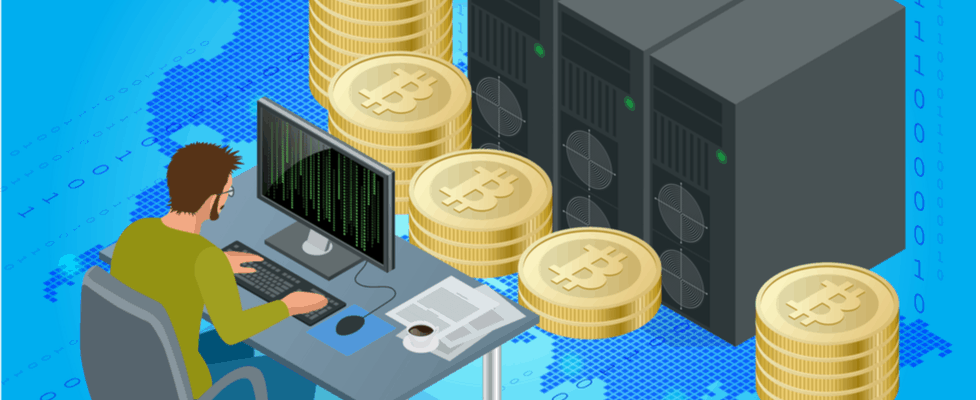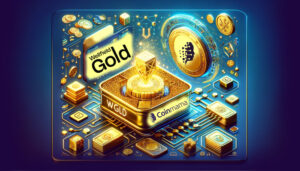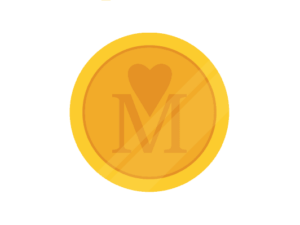Where do new Bitcoins come from? What is Bitcoin mining and how do you start mining Bitcoin? Fiat currency—government-backed currency such as the Dollar or Euro—is printed by individual countries. But cryptocurrency has its own set of rules. In this article, we’ll take a look at where Bitcoin comes from and what it means to be a Bitcoin miner, including some of the overhead costs miners encounter. After all, understanding Bitcoin mining is at the heart of understanding how cryptocurrency works—and why it’s a better global economic system than the one we’re used to.
Some background on Bitcoin and Bitcoin miners
Bitcoin is a currency that is both decentralized and deflationary by nature. In other words, it’s the opposite of fiat currencies, which are controlled by a central entity and subject to inflation. That’s because written into Bitcoin’s code is:
- A cap of 21 million Bitcoins that can ever be created
- That Bitcoin is to be governed by a peer network, known as Bitcoin miners, responsible for ensuring the coin’s integrity.
- Approximately every four years, the number of Bitcoins miners receive as a reward for their work is cut in half.
How does Bitcoin mining work?
To understand Bitcoin mining and why it exists, let’s start by looking at the technology behind Bitcoin. When we take a purely digital currency, how do we keep track of how many Bitcoins each person has? Bitcoin is based on the Blockchain—a giant ledger of every Bitcoin transaction. But unlike a bank account or a private ledger, the Blockchain is not only out in the open for everyone to see, it’s also maintained by the very people who use it. These Bitcoin miners use special mining computers and a series of complex algorithms to verify each transaction. Those transactions are then added to the Blockchain, and become an unerasable part of Bitcoin’s history. In this way, the currency is both decentralized—that is, it’s not controlled by any one government or entity—and tamper-proof.
Bitcoin mining:
- Accounts for the creation of new Bitcoins
- Maintains the integrity, authenticity, and safety of the Bitcoin network
Creating new Bitcoins
Why do Bitcoin miners do what they do? Because they earn a Bitcoin reward for their work. This is where the 21 million Bitcoins that can be created come in. Most Bitcoin transactions are trades between people or exchanges of already existing Bitcoin. For example, if you buy Bitcoin from Coinmama, that transaction will be confirmed and then will appear on the Blockchain as part of a block (or several transactions). But as an incentive to confirm that block, the miner who does so first will receive a certain number of brand new Bitcoins as a reward, which is then sent to their Bitcoin mining wallet.
How many Bitcoins are in the reward? That number changes approximately every four years. When Bitcoin was first released, the number of coins in the reward was 50. Then in 2012, it was cut in half to 25. In 2016, it was halved again to 12.5. And on May 11, 2020, the Bitcoin reward was once again cut in half to 6.25. The reward is cut in half every 210,000 blocks, and because it’s written into Bitcoin’s code that a new block will be issued every 10 minutes, this Bitcoin Halving takes place approximately every four years. This extends the life of the 21 million Bitcoins that can ever be created, and establishes Bitcoin as a deflationary asset.
Maintaining the integrity of the Blockchain
The Blockchain is the key to keeping Bitcoin tamper-proof, and the main role of Bitcoin miners is to maintain the integrity of the Bitcoin Blockchain.
When a transaction is made, it’s added to a block. Once enough transactions are on a block, that block is confirmed through computing power and added to the Blockchain. Once a block is added to the Blockchain, it is public, and it is almost impossible to alter it. In this way, the Blockchain stays tamper-proof.
But how do miners confirm transactions?
Proof of Work and Proof of Stake
Cryptocurrency mining requires proving that a transaction is authentic. One way this is done is through Proof of Work. In this method, special computers are used to solve complex cryptographic equations in order to prove that a block of transactions is legitimate. The first miner to solve the problem is the one to get the Bitcoin reward. The downside of Proof of Work is that it takes a lot of time and a lot of electricity, making mining both expensive and slow.
While Bitcoin uses Proof of Work, other cryptocurrencies aim to solve some of its problems by using Proof of Stake. In this method, miners put cryptocurrency they already have into the system, betting that they’ll be able to solve the block problem first, and the reward they receive is based proportionally on what they put in.
Is Bitcoin mining profitable?
If it seems unfair that the Bitcoin reward keeps dropping every four years, it’s worth looking at the number of Bitcoin in the reward versus the Bitcoin price. At the time of the 2012 Bitcoin Halving, the Bitcoin price was about $12. So a reward of 25 Bitcoin yielded approximately $300. At the time of the 2016 Bitcoin Halving, the reward dropped to 12.5 Bitcoin, but the price had risen to $657. Meaning the Bitcoin reward was $8,212. Currently, the Bitcoin price is approximately $8,500, which means a reward of 6.25 Bitcoin will still yield $53,125.

Is Bitcoin Mining Profitable
So why aren’t we all Bitcoin miners if we could potentially make $53,125 every 10 minutes? For one thing, Bitcoin mining isn’t so simple, and it’s definitely not cheap. Successful mining requires a heavy investment in a lot of very expensive equipment. (You can’t mine Bitcoin on your home computer.) It also requires a lot of electricity—some people estimate that the amount of electricity required to mine Bitcoin is equal to the amount of electricity required to power a small country—so unless you’re living in a country where electricity is very cheap, mining probably isn’t worth it. There’s also no guarantee that you’ll be the first miner to validate a block and earn the reward. In other words, even if you invest in the equipment and electricity, you may not earn back what you’ve put in. And as the price of Bitcoin rises and the block reward increases in value, the competition among miners heats up as well, making it less probable that you’ll be the one to earn the block reward.
The best way to build your Bitcoin portfolio is to buy Bitcoin through an exchange such as Coinmama.
Bitcoin mining machine hardware
While in the earliest days of Bitcoin you could mine cryptocurrency on your personal computer, today that’s no longer possible. The price increase of Bitcoin drove competition up, creating harder and harder algorithms that couldn’t be computed on personal equipment. Today if you want to be a Bitcoin miner, you need to build a Bitcoin mining rig, and invest, at minimum, in a special Bitcoin mining computer known as an ASIC.
Bitcoin mining pools
Even with the right Bitcoin mining computer, it’s not worth it to mine alone. That’s because as an individual, you’ll be competing against Bitcoin mining farms, which have much more equipment, and therefore a much greater chance of reaching the right answer first. One solution some miners have found is to join a Bitcoin mining pool, or to join forces with other miners. The upside of joining a mining pool is that it gives you more resources and a greater chance of getting the block reward. The downside is that there are often fees involved, and you have to share the block reward with the rest of the pool, making your profit smaller. Still, if you’re determined to start mining Bitcoin, it’s best to do so through a Bitcoin mining pool.
Bitcoin mining explained
At the end of the day, Bitcoin mining is an integral part of making Bitcoin work. Without it, the Blockchain wouldn’t function properly, Bitcoin transactions wouldn’t be confirmed, and Bitcoin would lose all meaning. Miners are essential to the operation of Bitcoin.
Yet for the average person, the investment required to be a successful miner is out of reach and unprofitable. For almost everyone except a small handful of people who not only want to make the investment but also live in one of the best countries to be a Bitcoin miner, the cheapest and most efficient way to get Bitcoin is simply to buy it through an exchange or broker that specializes in the sale of Bitcoin.



